992 Porsche 911 GT3 Review: The Chief Anti-Supercar
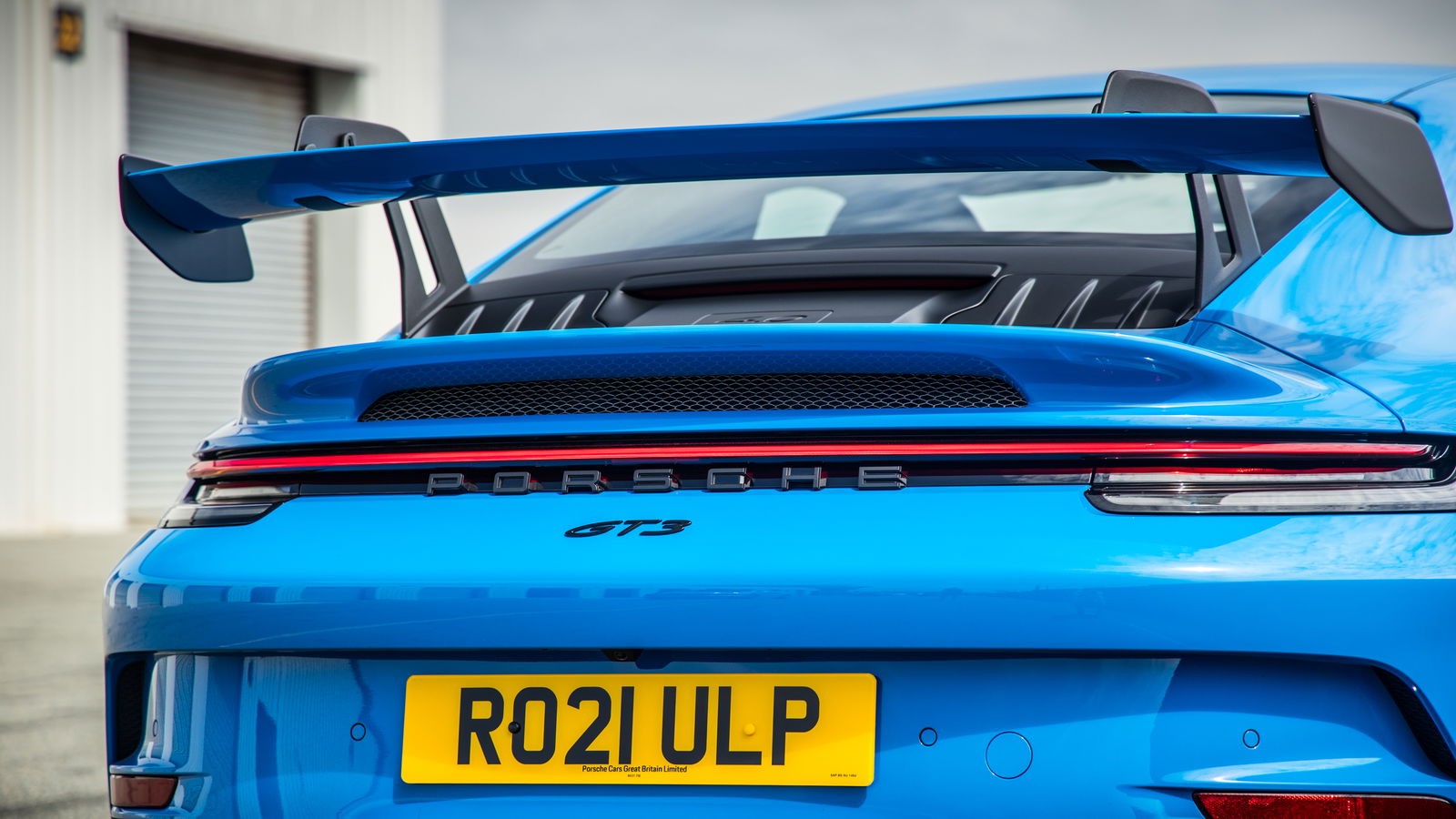
Pros
Cons
I couldn’t have picked a better day for a first drive in the all-new 992 Porsche 911 GT3 if I tried. Well, perhaps one with drier weather might have been nice, but this is Wales - intermittent drizzle comes with the territory. Anyway, what makes it so fitting is this overcast Thursday just so happens to coincide with the reveal of the Ferrari 296 GTB.
The Ferrari is a car with an immensely complicated V6 powertrain that puts out a ludicrous 819bhp. The Porsche, on the other hand, uses pretty much the same 4.0-litre, naturally-aspirated flat-six as the last GT3, making 503bhp - a mere 10bhp rise.
Here we have two very different schools of thought to making a desirable, exotic performance car - one that looks to the future with the latest and greatest tech, and another that relies on decades of honing the same effective recipe. With an optional manual gearbox thrown in for good measure.
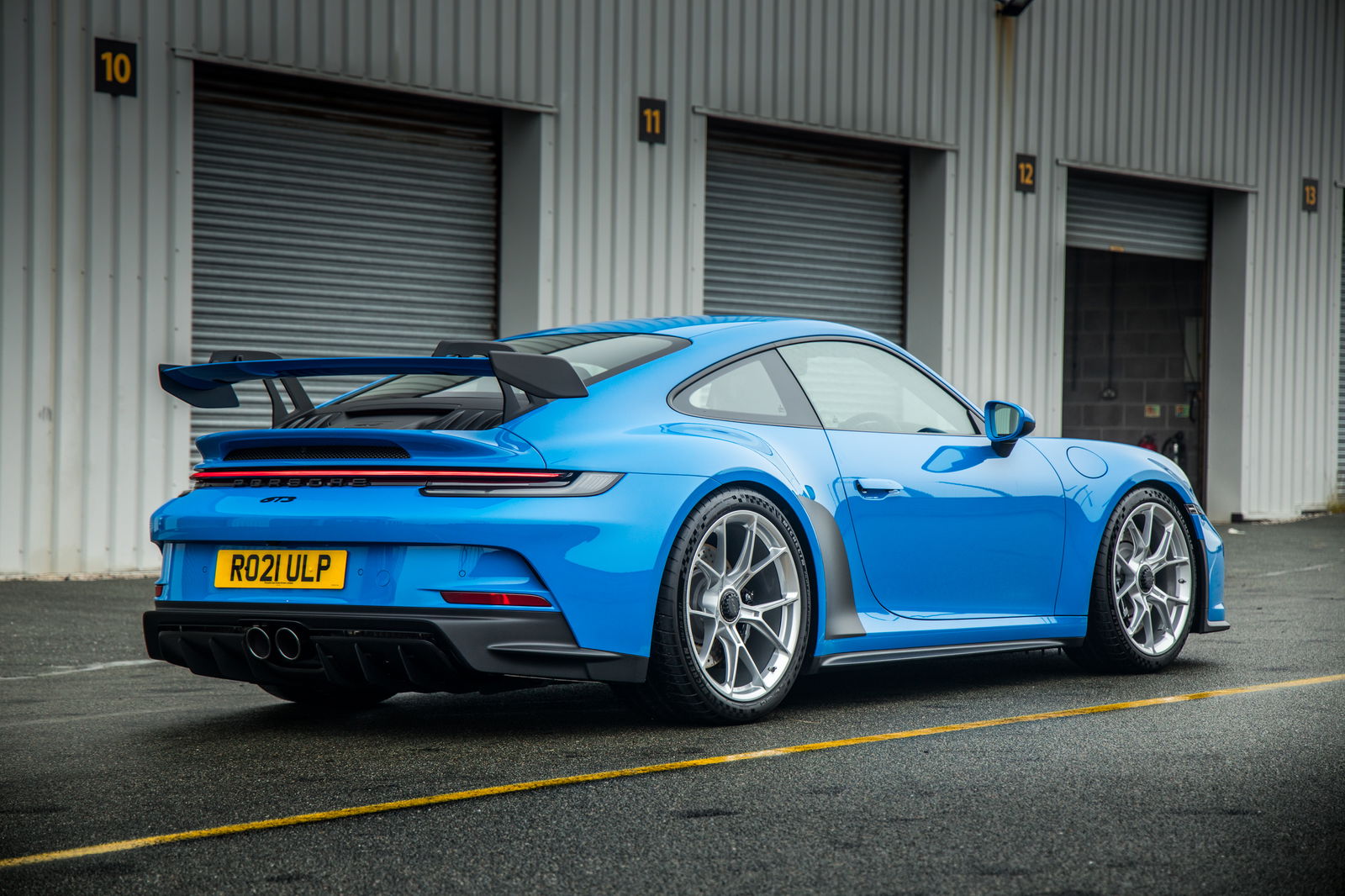
It was a similar deal when the 992 GT3 was first revealed, with the release going out within hours of McLaren’s announcement for the V6 hybrid Artura. Even without these new hybrid monsters, the GT3 is still the antithesis of the turbocharged, pointlessly powerful supercar elite.
For all its more old-school sensibilities, though, the new GT3 does come with plenty of advancements. The rear wing, for instance, has a ‘swan neck’ design, giving smoother airflow on the underside thus increasing downforce. At the other end, there’s now a double-wishbone suspension setup. There’s nothing hugely radical about that in the car world as a whole, but in the gradually evolving realm of the 911, that’s a big deal - road-going versions have exclusively used MacPherson struts up until now.
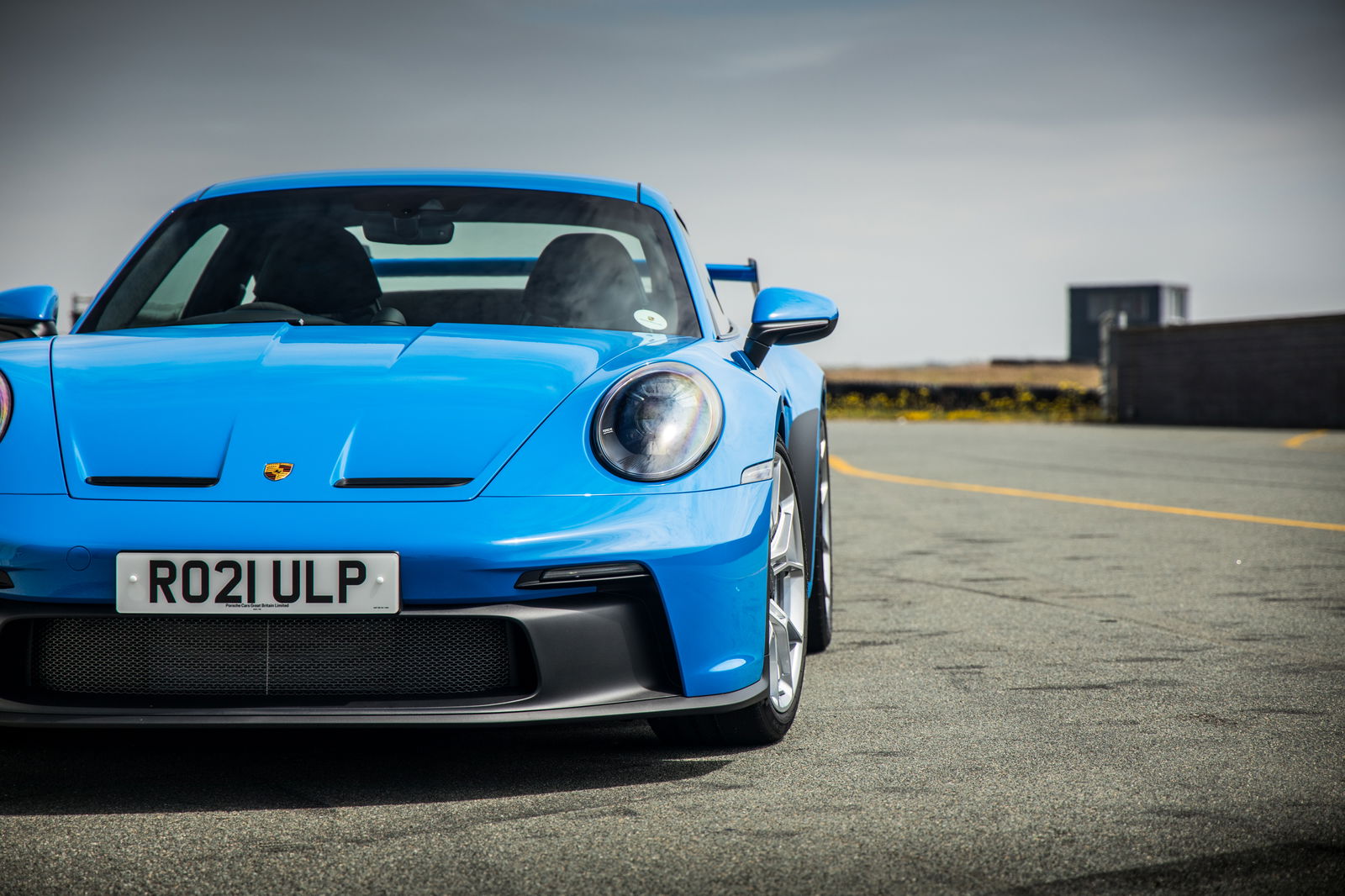
This is in theory the optimal suspension layout since it gives a better contact patch between the tyre and the road, with the negative camber remaining more consistent through the damper’s travel. It’s meant that Porsche could make the front axle twice as stiff as before without sacrificing comfort. Given the big changes at the front, it was necessary to completely redesign everything at the rear too.
Heading out onto a damp Anglesey circuit in a PDK-equipped GT3, the effect of these changes soon become clear. A soggy surface on an unfamiliar track with a car like this should be code brown territory, but such is the communication from the front end through the steering wheel that you can understand exactly what you’ve done wrong and what needs to be done differently the next time around.
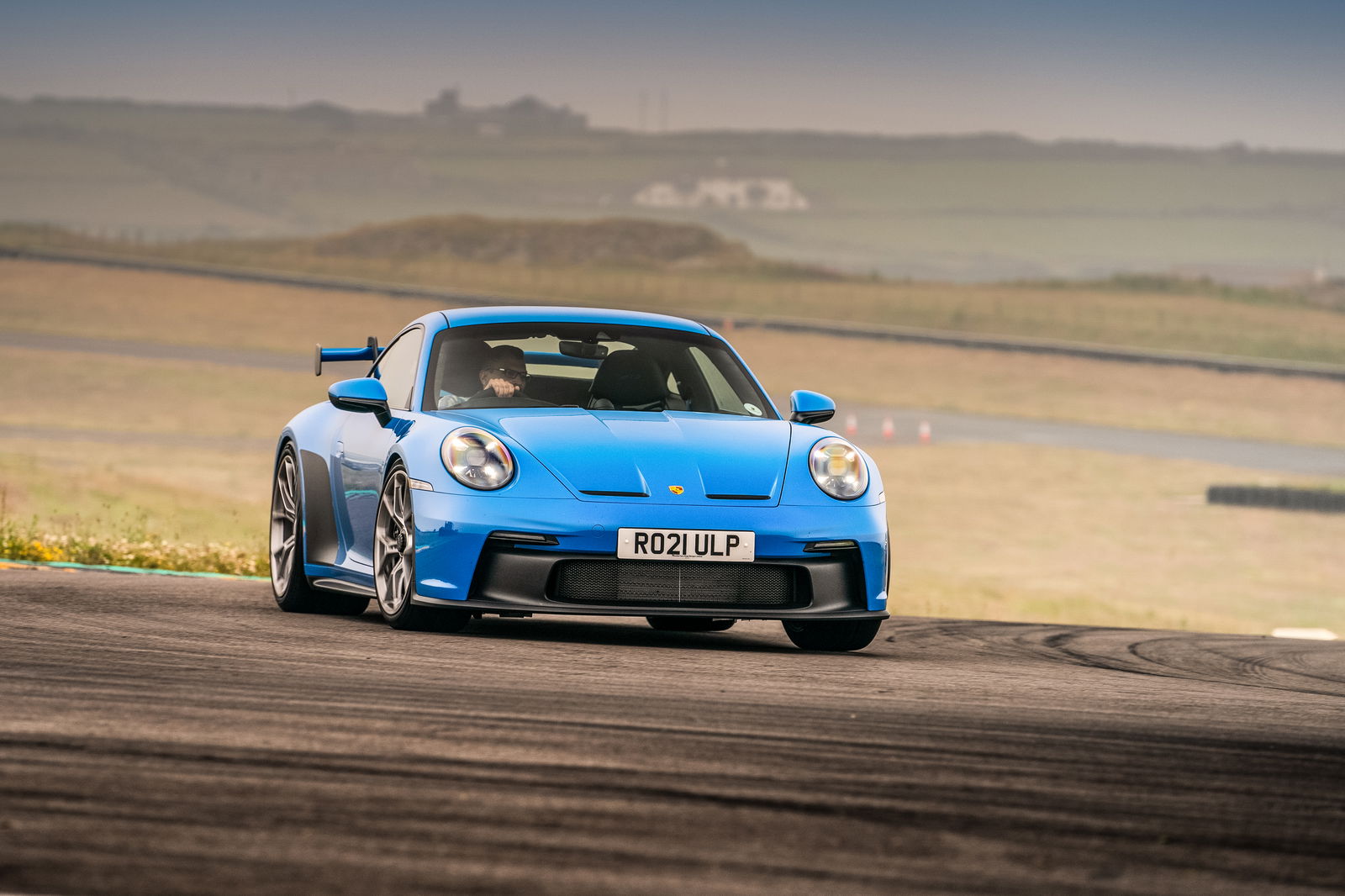
On these initial wet laps, it tends to be the front end of the car slipping more than the rear - there’s a surprising amount of traction from the fat 315-section, 21-inch Michelin Pilot Sport Cup 2s up back. As the track starts to dry, I’m exploring the upper reaches of that nat-asp flat-six, finally climbing to that glorious 9000rpm redline.
A switch to the six-speed manual, and I’m back out on track enjoying a beautifully short and sharp shift and the extra layer of engagement this brings. The fun is short-lived, though - fog descends on the track and we’re returned to the pits since it’s getting hard to see the corners as they’re coming up. Ron Dennis would call this ‘sub-optimal’.
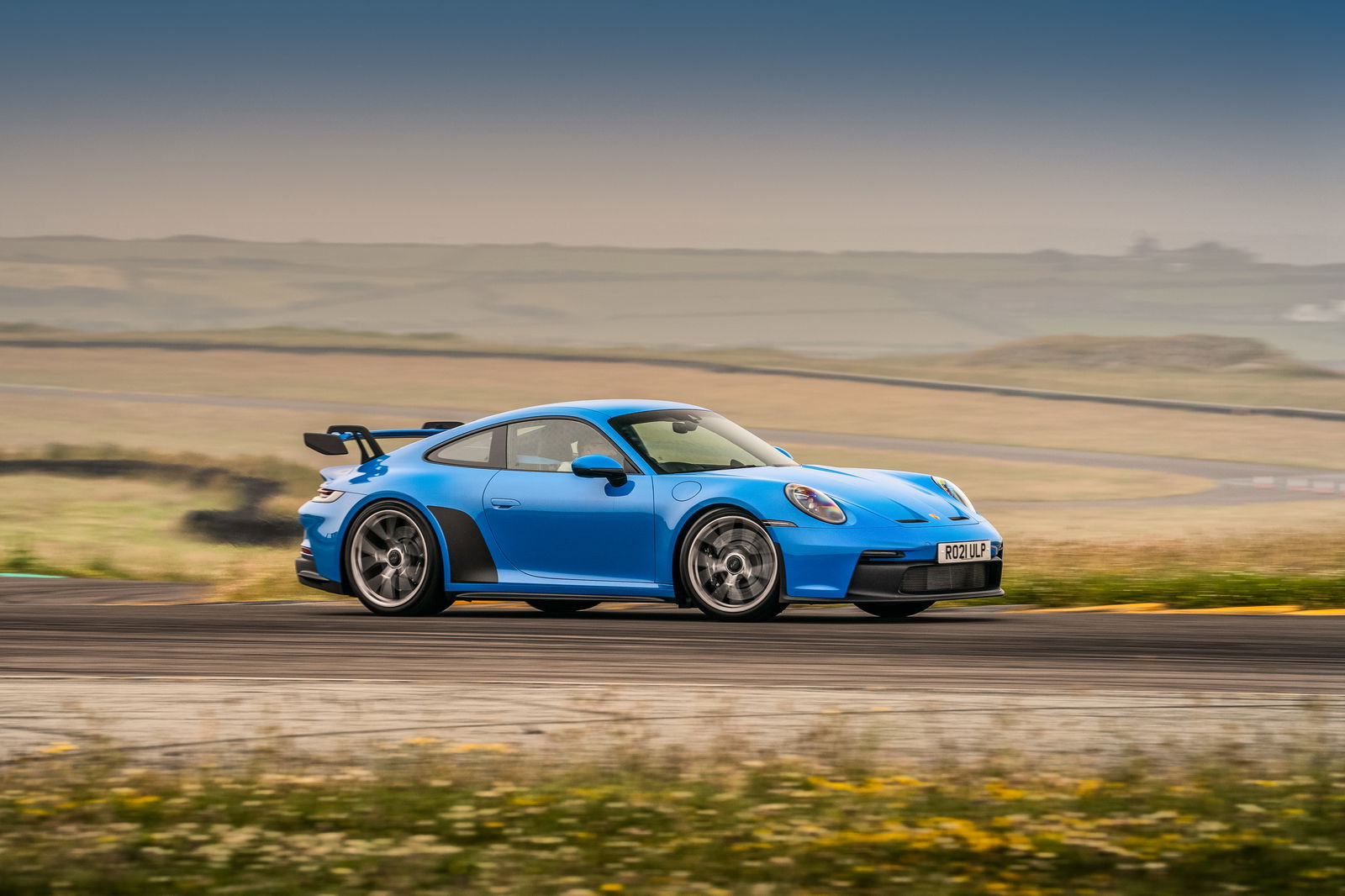
Fog lifted and track at last dry(ish), I’m sent out for one last thrash. And it’s fabulous. The GT3 can finally be pushed, and there’s not a hint of that classic 911 understeer even the GT stuff has suffered from in the past. The back end refuses to budge, too, only shifting with provocation once all the electronic assistance stuff is turned off. It’s at this point you’re reminded exactly where the engine’s sitting, with that weighty rear end swinging around quickly and threatening to catch you out.
Neatly, there are two separate toggle switches for the electronics if you want to engage in such shenanigans - one for switching off just the ESC (electronic stability control), and another to switch off both the ESC and the traction control.
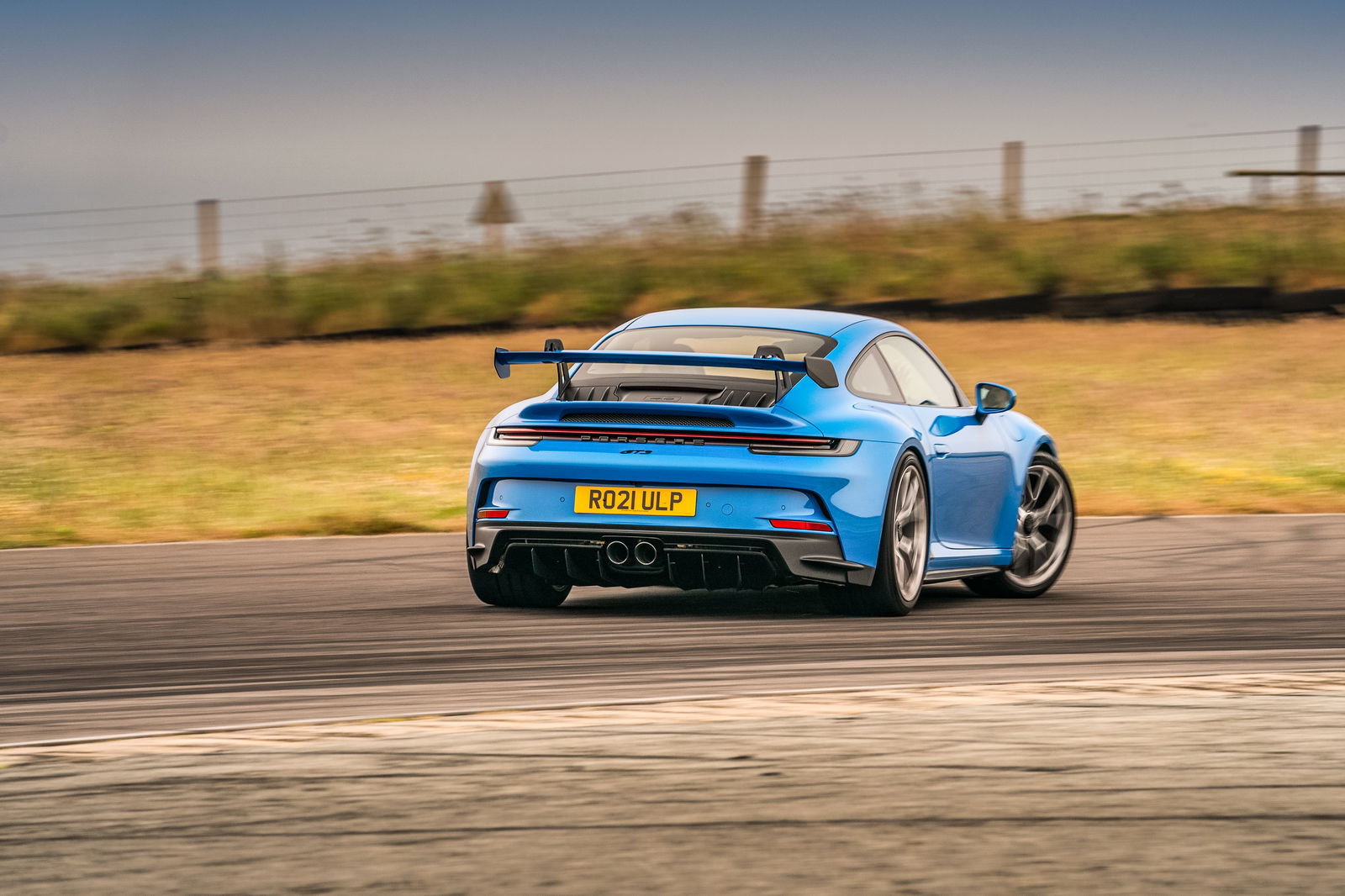
All of that can remain disengaged, too, such is the enormous capability of the chassis and the way it lets you know exactly what’s going on underneath. It feels at its best through the unnamed turn four, a long, fast right-hand sweeper where the GT3 can be heavily loaded up without any protest whatsoever.
It still feels accessible, however. This isn’t a car that feels like it’ll take years for an exceedingly average driver (like me) to unlock a decent chunk of its potential. We’ve all seen the pictures of the bonkers-looking new GT3 RS with its gigantic rear wing, which looks like it’ll be a little too serious for some.
The GT3, on the other hand, can be your best friend within a couple of track stints. It still requires you to pay attention, of course, but it’s worth doing so for the rewards in store. And yes, one of those is the noise from the engine.
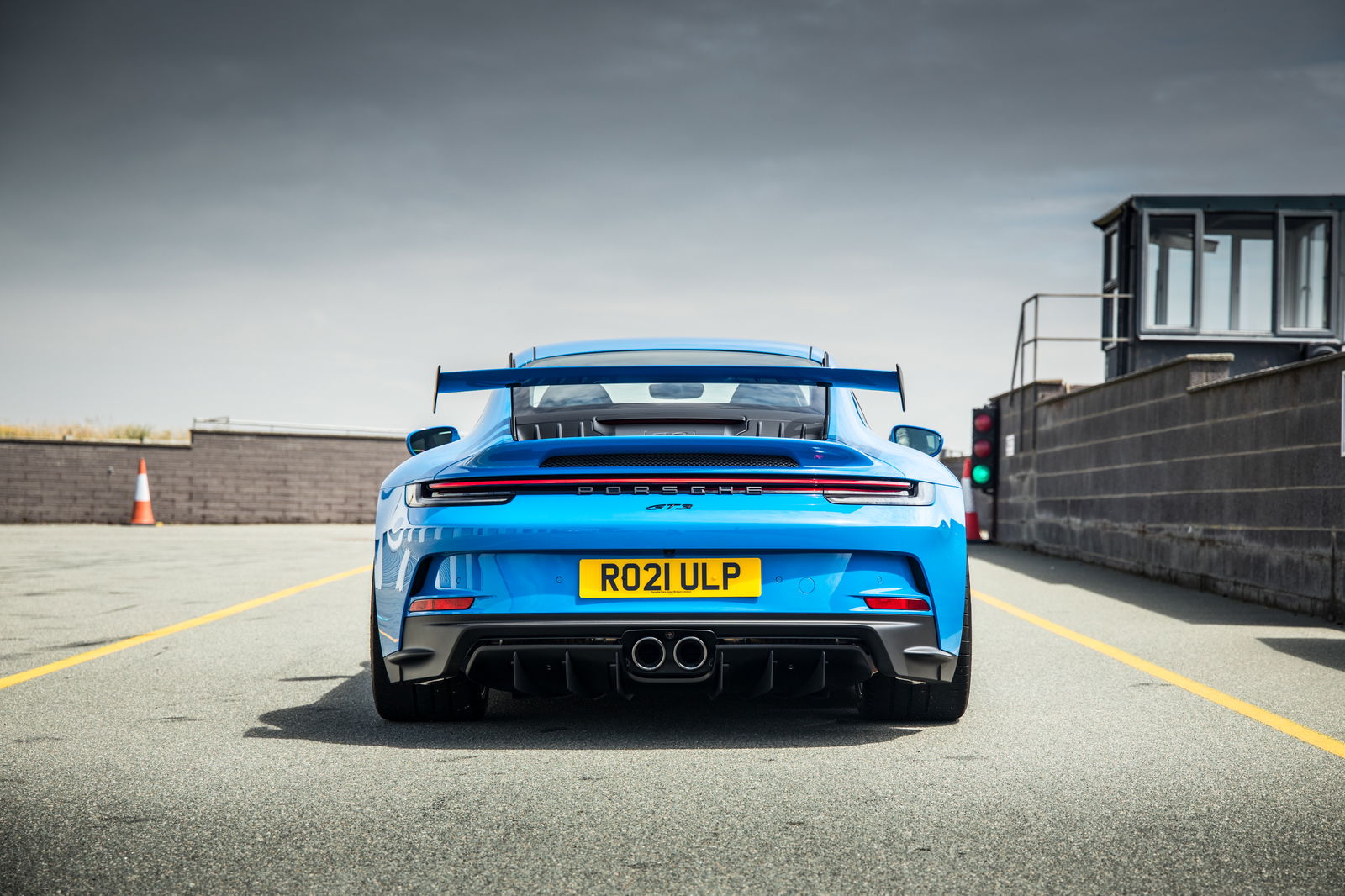
Yes, the shock and awe has been dampened slightly by the use of particulate filters. It doesn’t howl quite like it used to above 6000rpm, and from the outside, the exhaust note is much raspier. Even in this more muted guise, though, the soundtrack is still orders of magnitude better than the average turbocharged V8 supercar.
There’s no competition in terms of responsiveness, either. All it asks is a little more thoughtfulness regarding gear selection - you can’t expect some fat mid-range torque delivery to drag you out of the corner. A more modest figure of 347ft lb peaks at 6100rpm, so ideally you never want to be below about 5k. Fine by me.
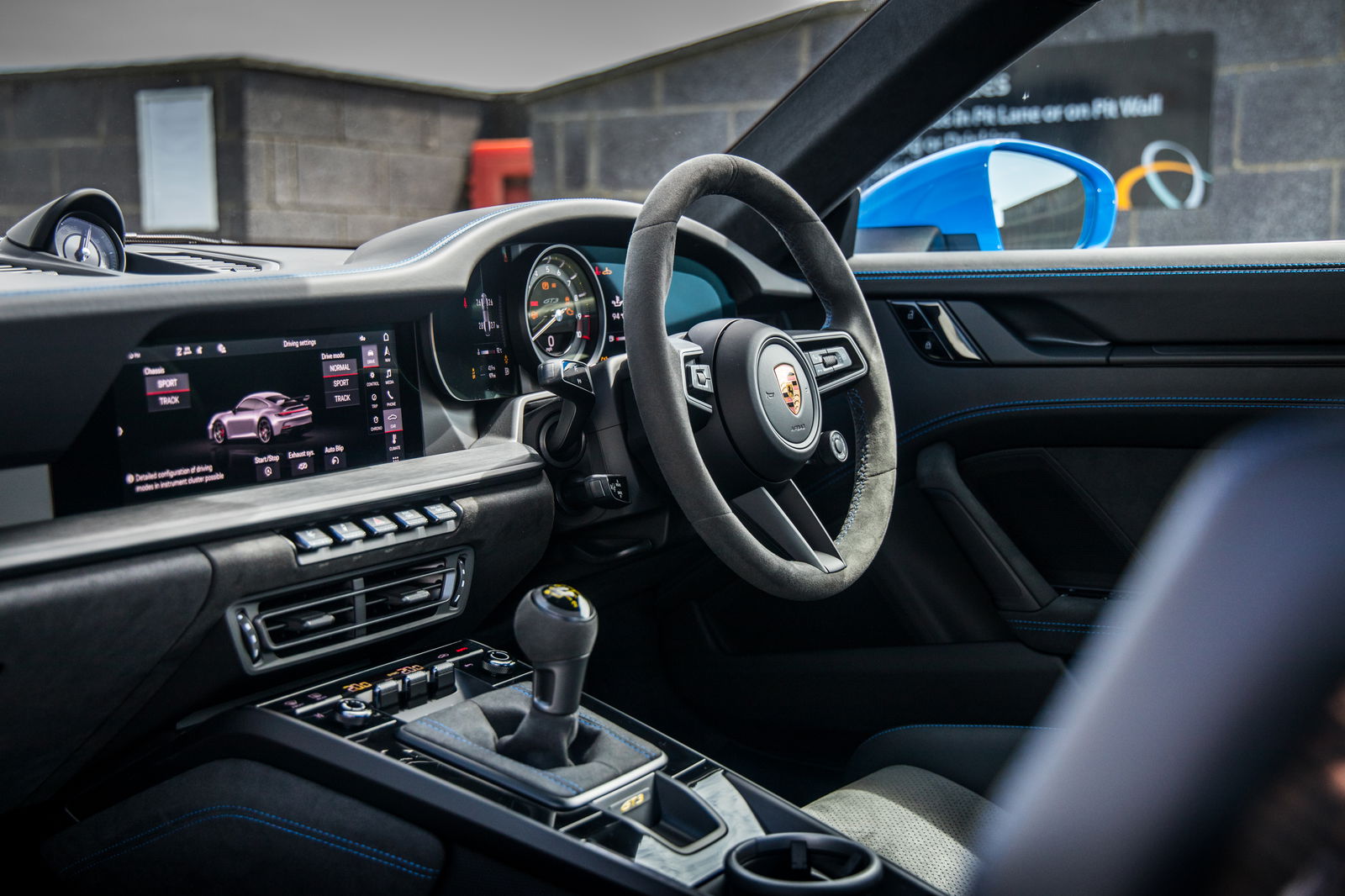
Final stint at an end, the GT3 gets a cool-down lap before I peel into the pits for a final time. We won’t be driving it on the road today - that box will get ticked in a few week’s time via the wing-less 911 GT3 Touring. Based on its track exploits, though, this thing is every bit as good as we were expecting, and then some. The 991.2 version didn’t seem to leave much room for improvement, yet here we are.
See also: ‘Supercars Peaked 10 Years Ago: Tell Me I’m Wrong’
As supercars like the new Ferrari and McLaren hybrids plus others get ever more complicated, over-powered and overweight, the 911 GT3 is incredibly appealing. The team at Weissach isn’t interested in chasing big, impressive figures for the GT3, even as lesser 911s like the Carrera GTS catch up in terms of power output. It’s absolutely not pitched as a supercar, but if I had supercar money to spend, it’s sure as hell what I’d want to buy. Predictably, one with a manual gearbox.
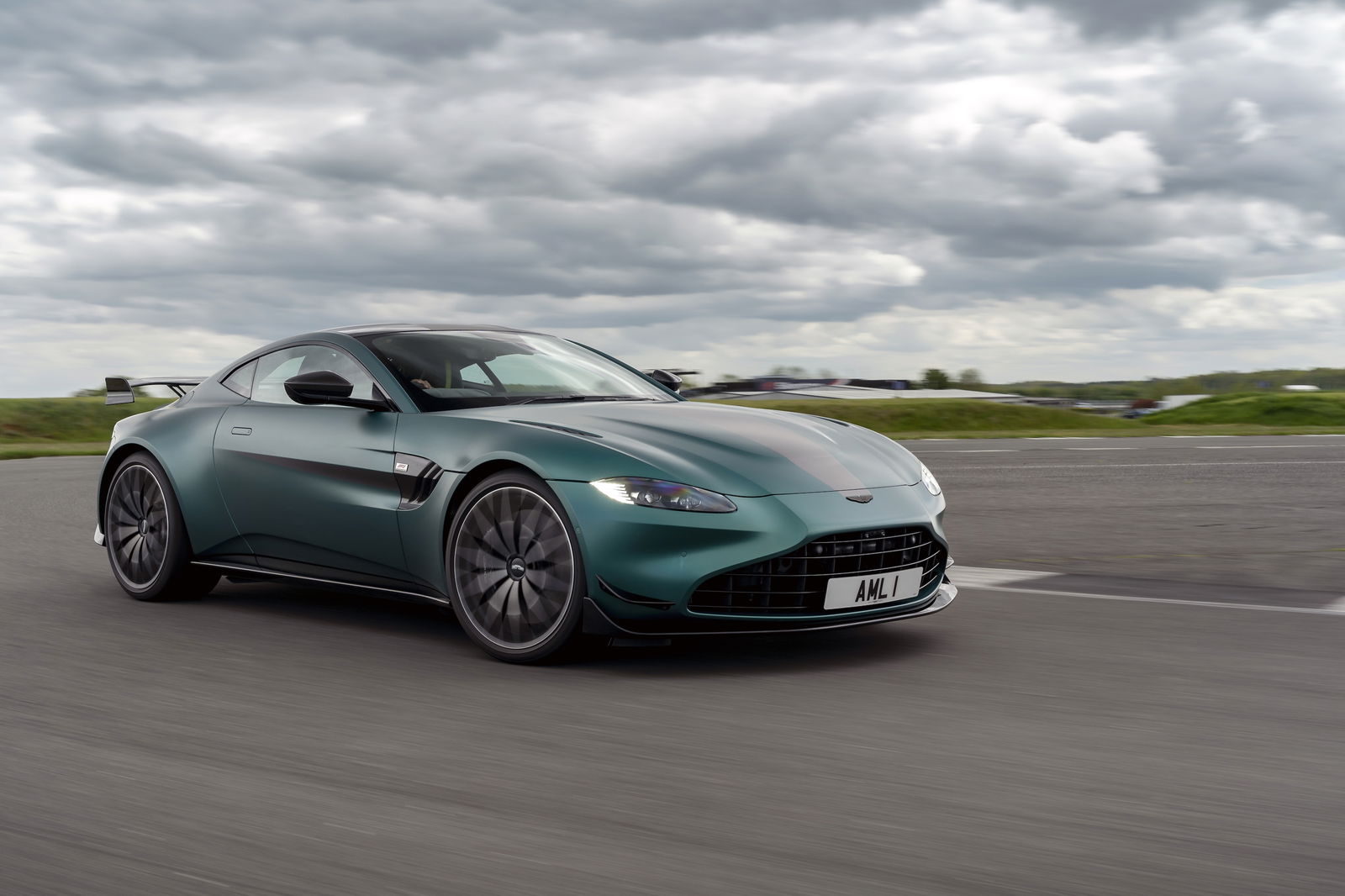
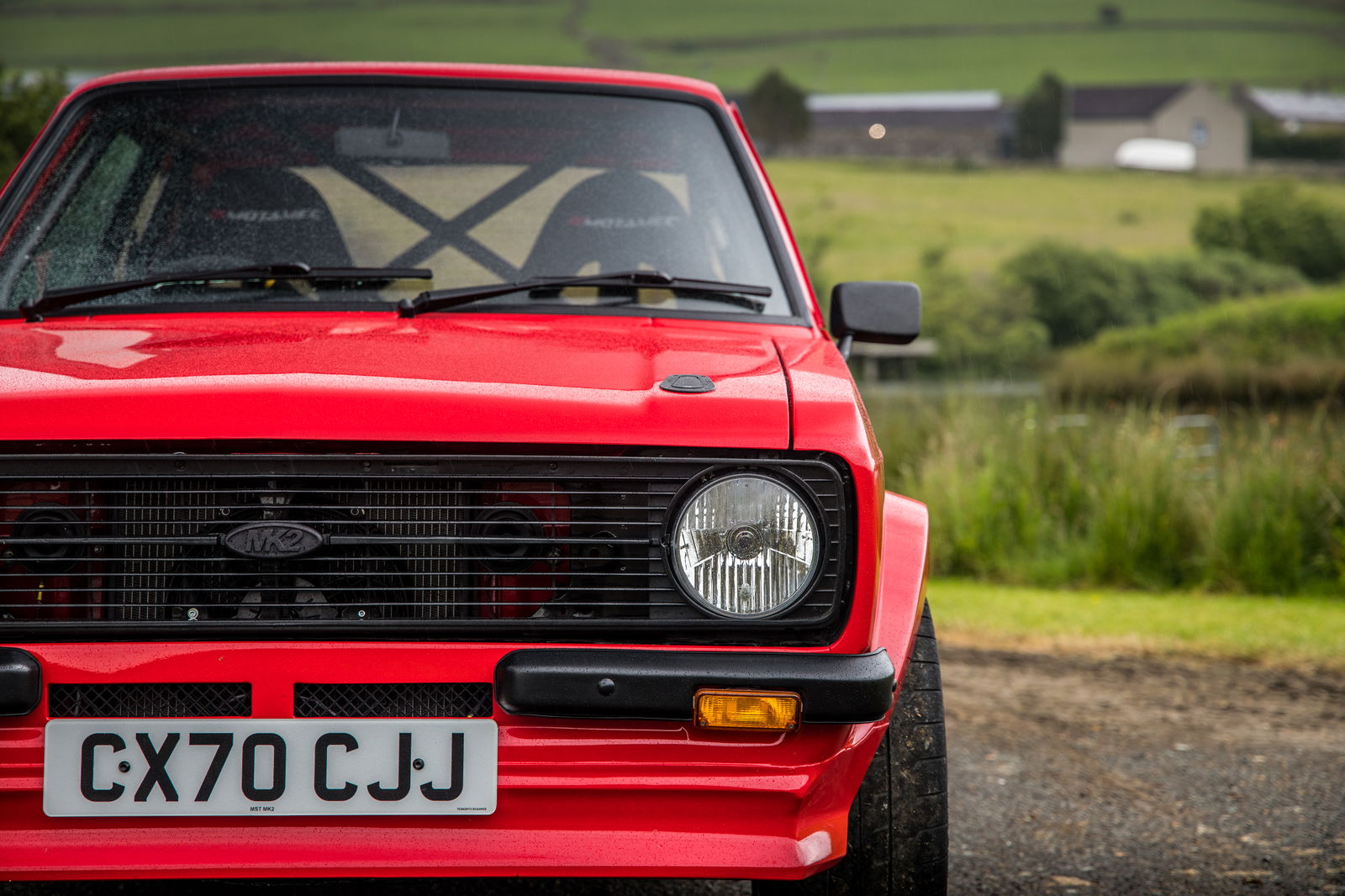

Comments
Finally, the 911 got closer to the older Civics by introducing front double wishbone suspension, though the Civic clearly remains superior with double wishbone suspension at all four corners. Seems like Porsche still has some work to do there.